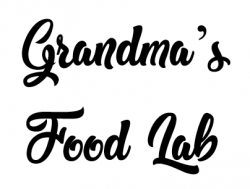Know your apples
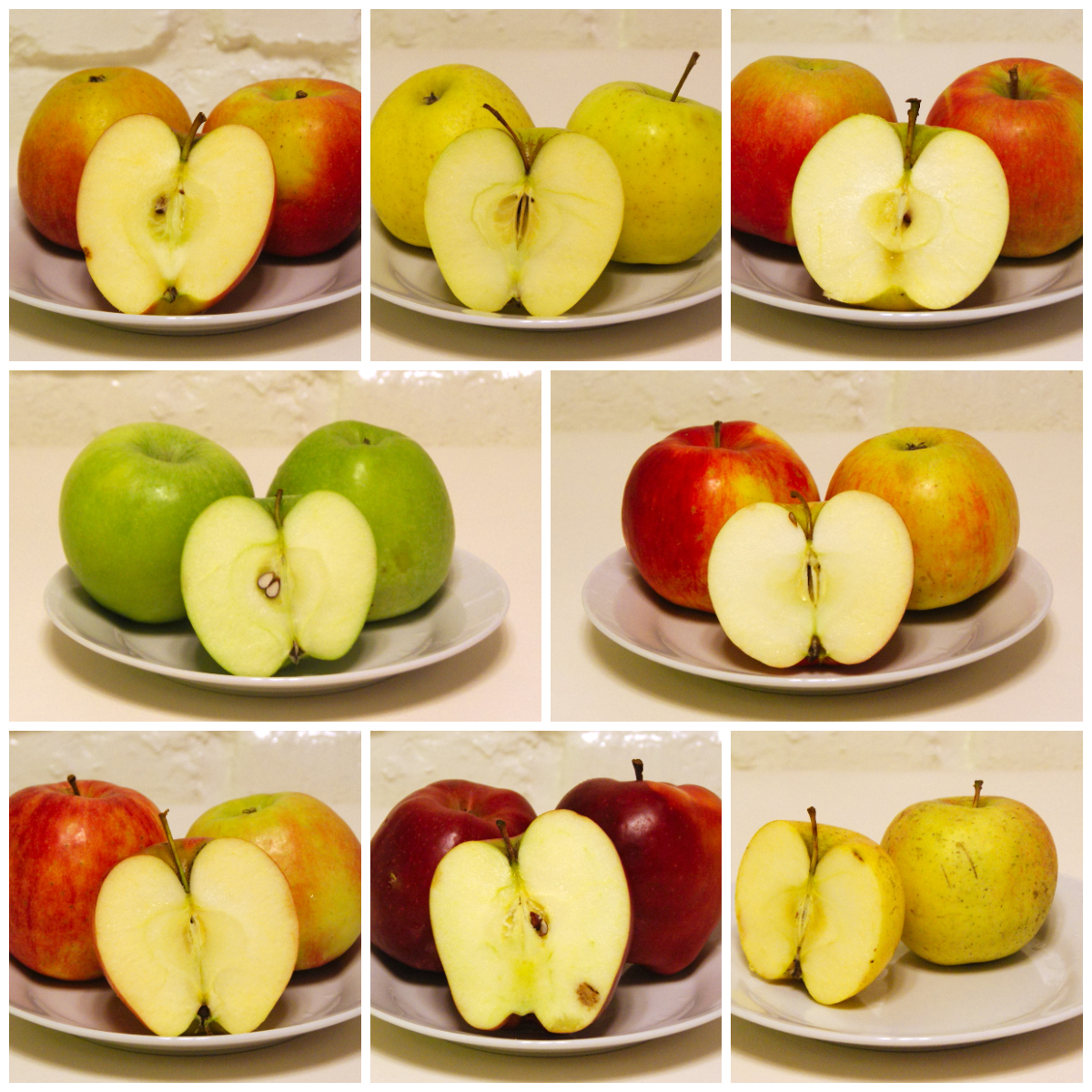
If you ever wondered which apple variety to choose for your dish, this is the place to be. We put eight common apple varieties (braeburn, cripps pink, fuji, golden delicious, granny smith, idared, jonagold, red delicious) to the test to learn their differences. The tests consisted of eating them raw, sautéed and baked. At the end there are our recommendations for when to use each variety.
Motivation
When you are trying a new recipe with apples and it doesn’t say which variety to use, or you cannot find that one variety in a supermarket or a farmer’s market, it can get quite handy to know your apples. Also, apples are one of the most diverse fruits in the world with more than 7500 varieties! That’s a big number, so we focused only on ones that are easily obtained. Eight of the used varieties are bought in two nearby supermarkets so you shouldn’t have problems with finding the same ones.
Raw test
There is no much to it, slice it and eat it!
Braeburn
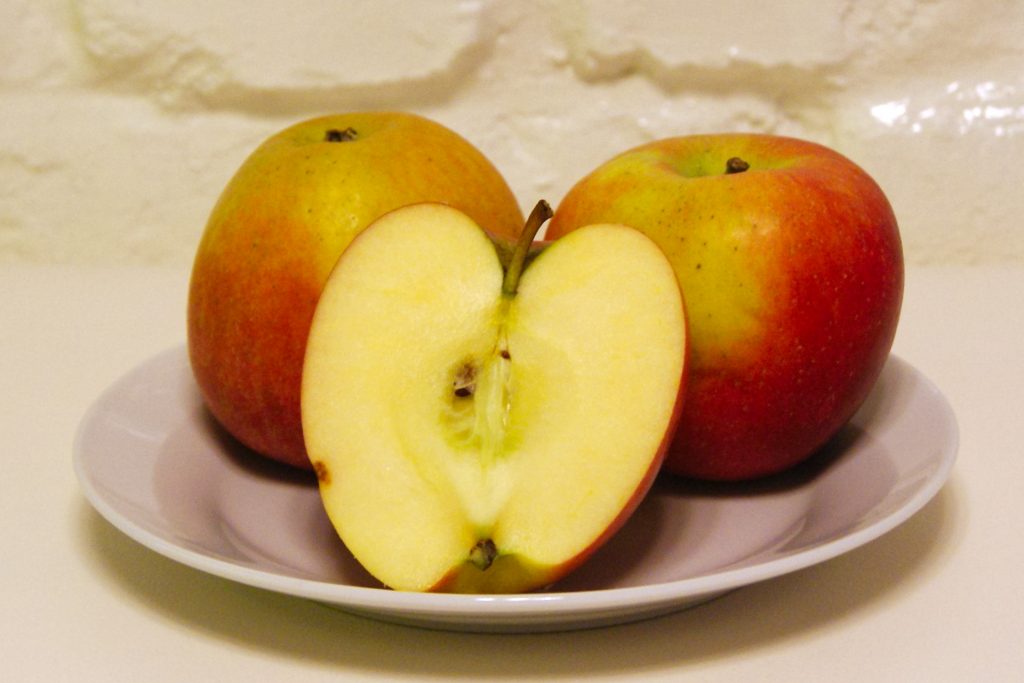
- Very sweet, but also very tart. Even though the sweetness covers up the acidity, you can feel the acidity by the amount of saliva it draws from you.
- It has crisp texture.
- The skin is flavourless.
Cripps pink
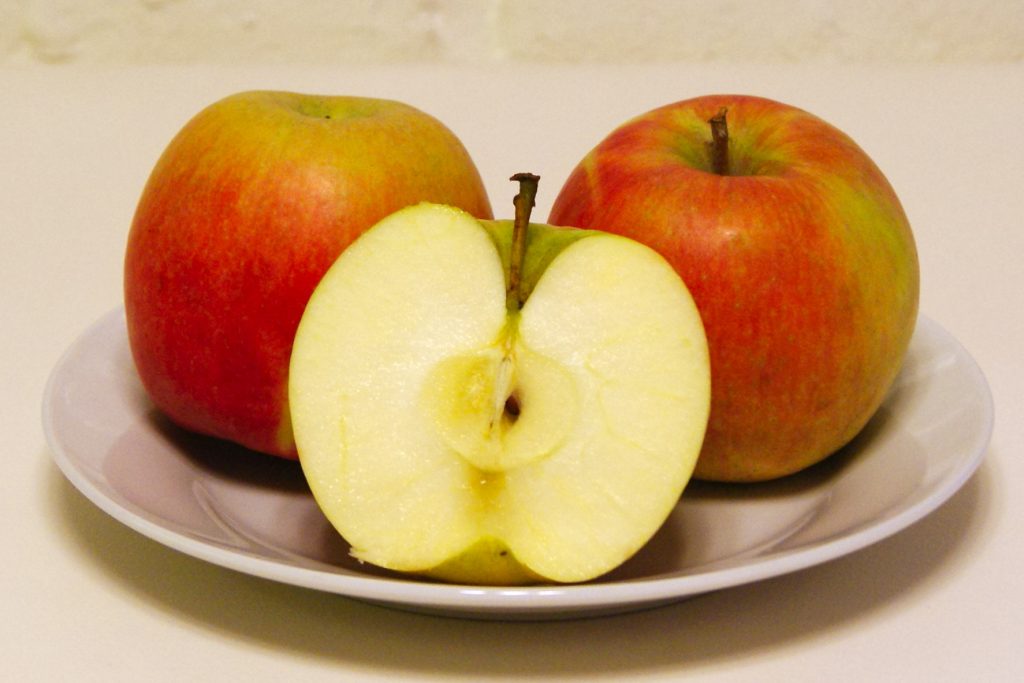
- Also goes by the name Pink Lady ®
- Sweet with low tartness
- Mild flavor (milder than braeburn)
Fuji
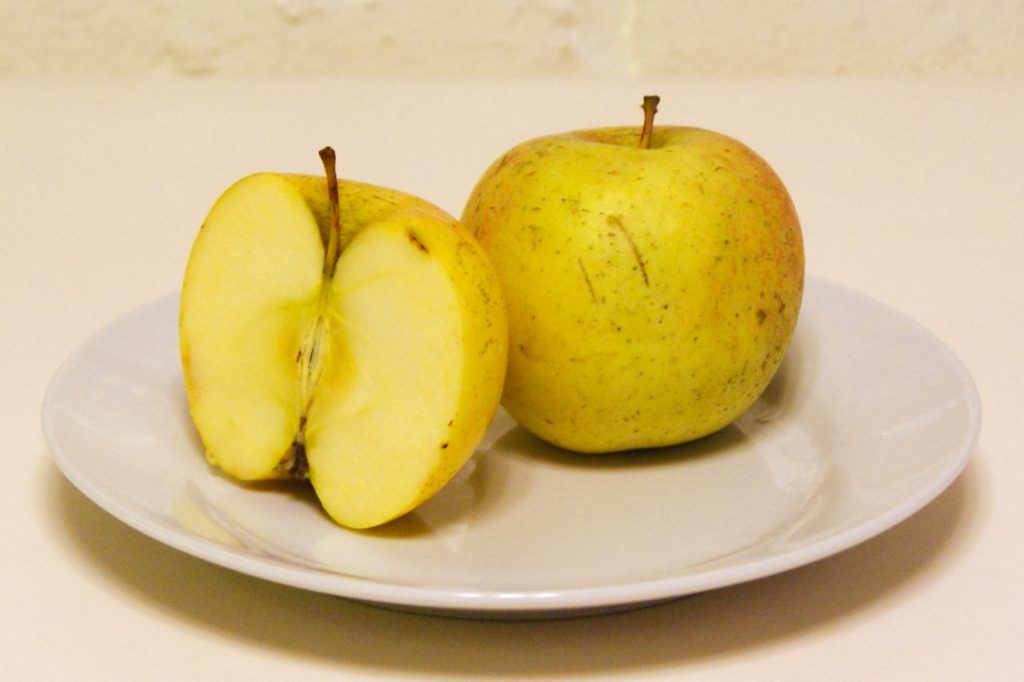
- Mild flavor, low sweetness
- Floury texture and easy to bite
- High water content which can be defined as watery, but also as juicy and refreshing
- Chewy skin
Golden delicious
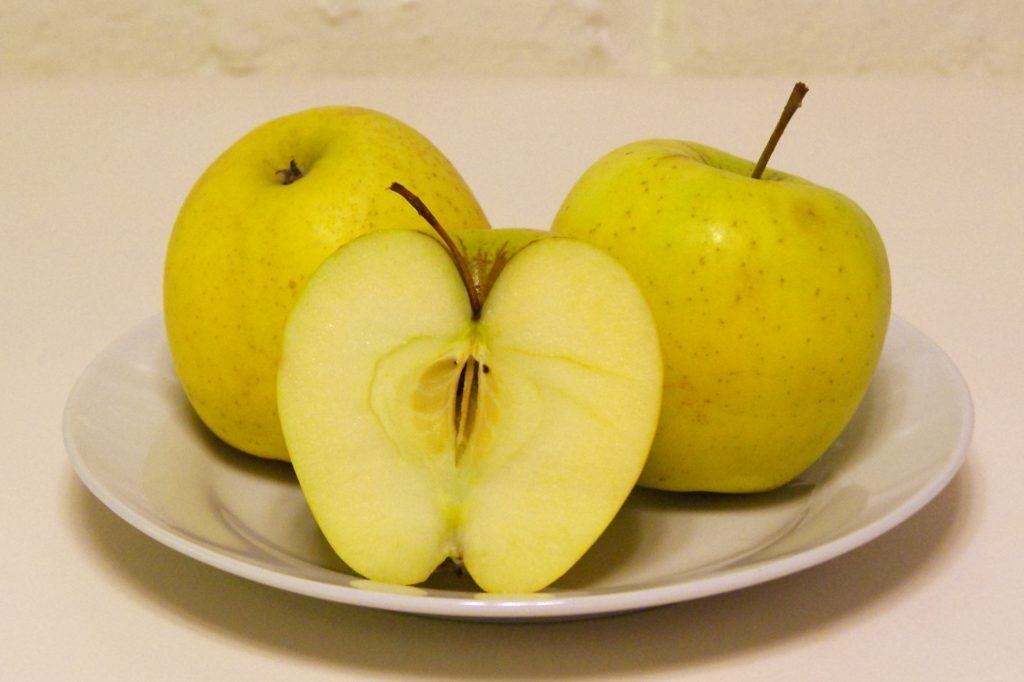
- Good balance between sweetness and tartness
- Soft and creamy texture
Granny smith
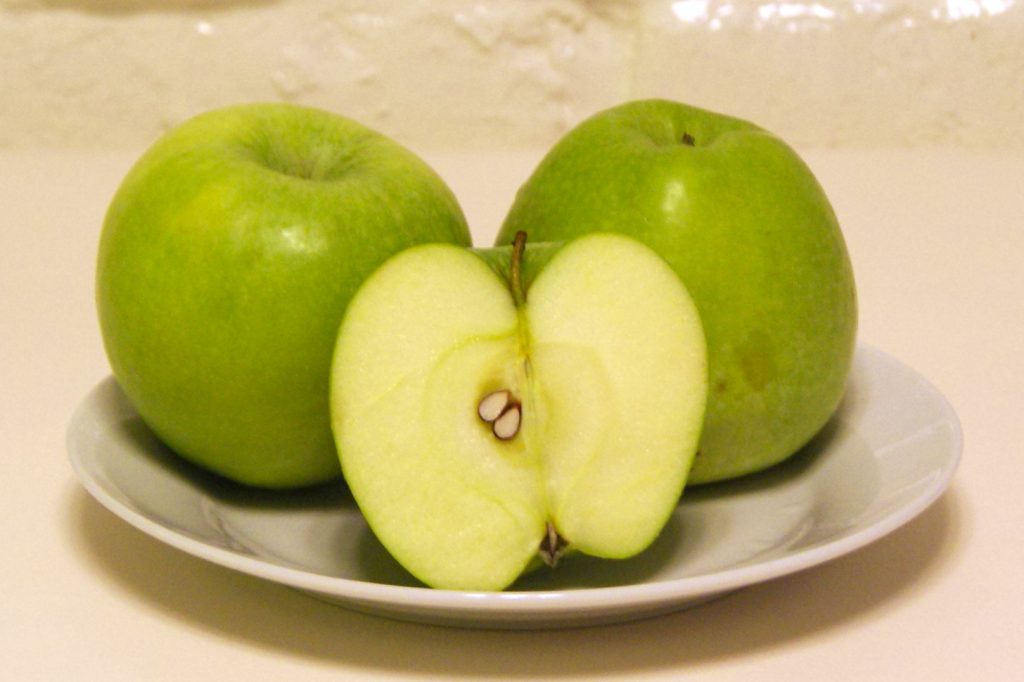
- By far the most acidic one, close to citrus acidity
- Very hard texture (hard to bite)
Idared
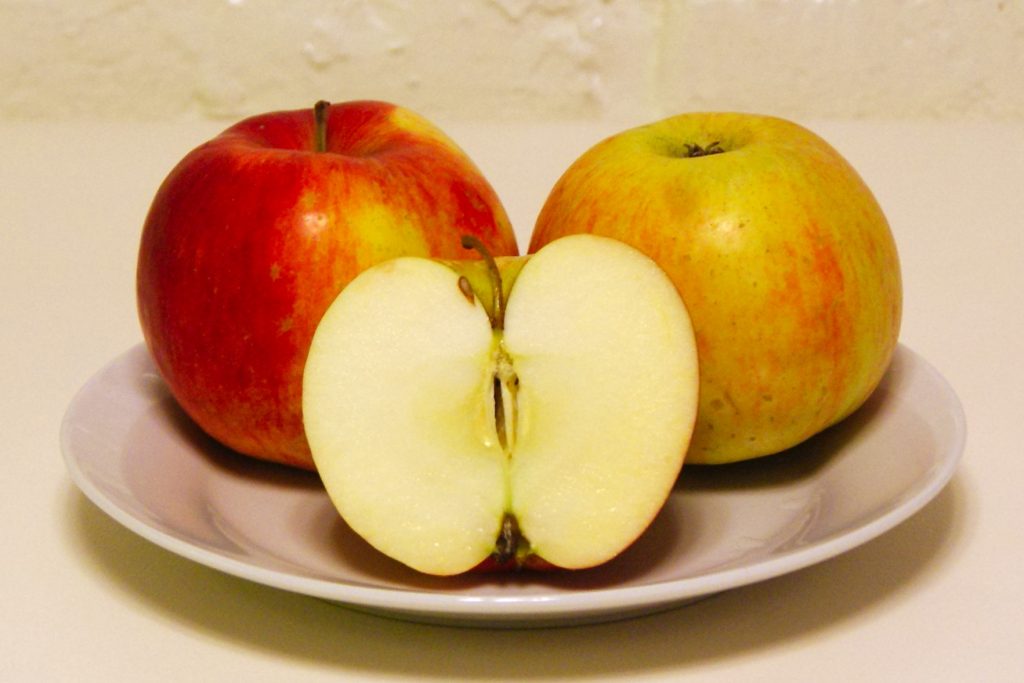
- Strong apple flavor
- Tart but sweet
- Floury and soft texture
Jonagold
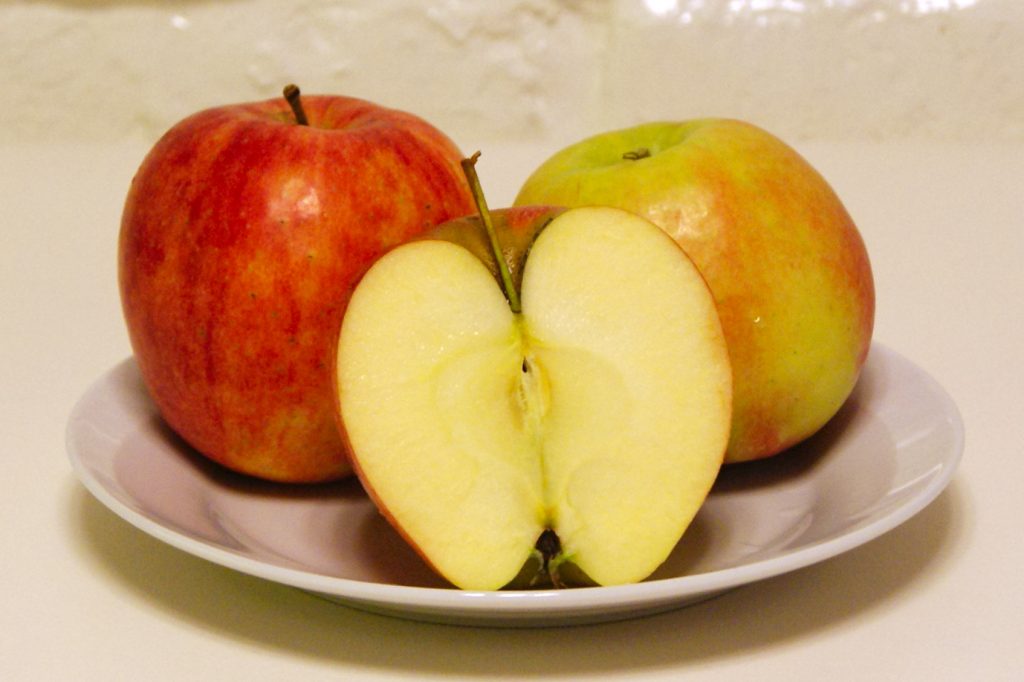
- High sweetness, low tartness
- Easy to bite
Red delicious
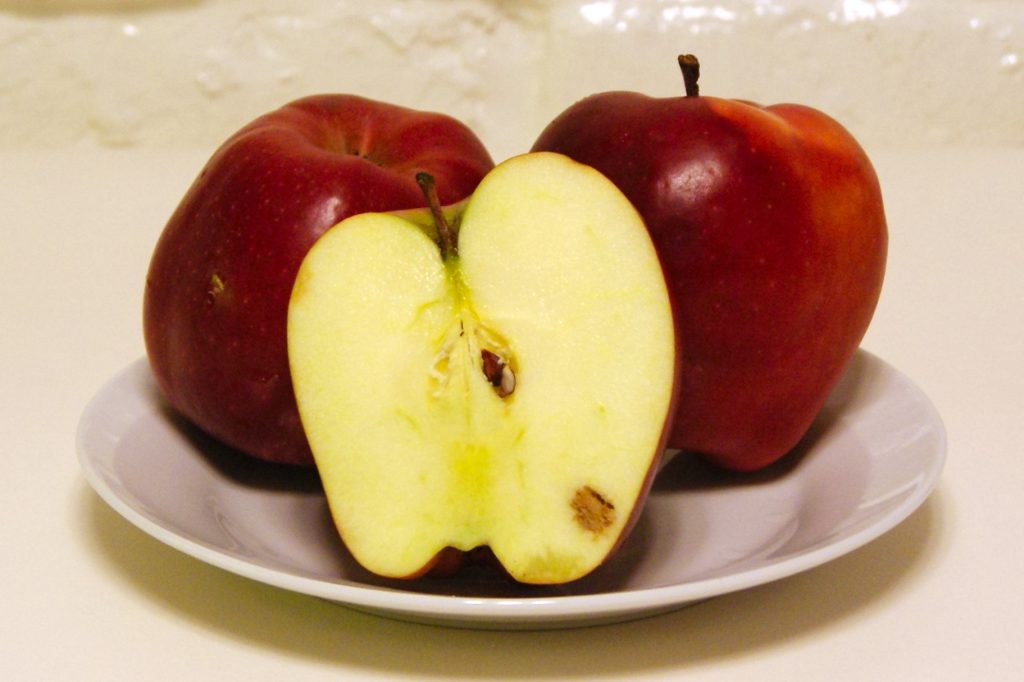
- It has a sort of fermented flavor and bitter aftertaste
- Floury texture
- Hard skin
Sauté test
The apples were chopped into small pieces and sautéed for exactly 5 minutes in 2 teaspoons of sunflower oil (something neutral) over medium heat.
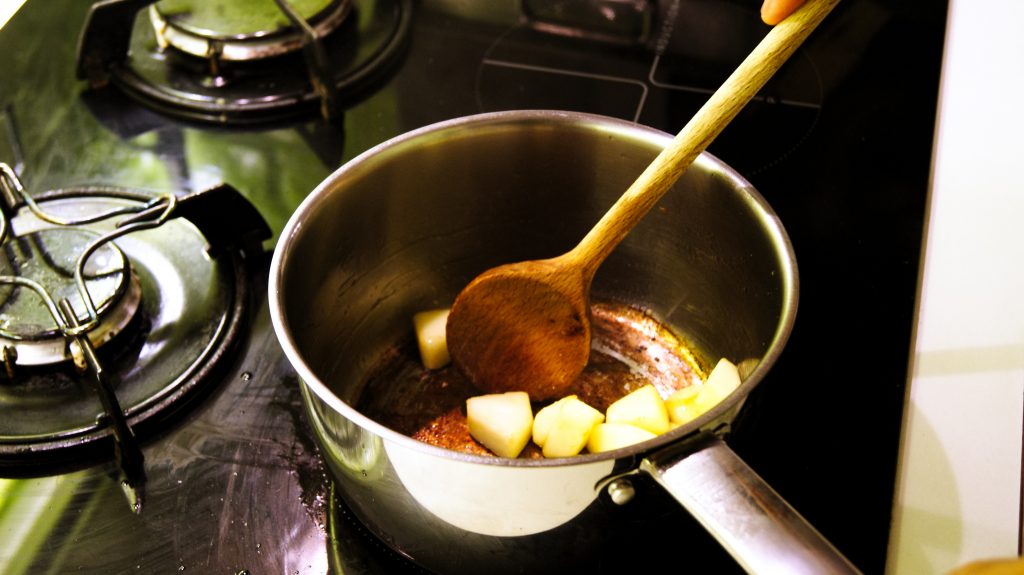
Braeburn
- Holds shape nicely
- It lost some sweetness so tartness came up
- Caramelized well which means more flavor
Cripps pink
- Holds shape nicely but well cooked
- Sweet with some nutty flavor
- Not well caramelized – pale appearance
Fuji
- Soft and smooth texture
- Sweet with a hint of fermented flavor
- Seemingly dark but not well caramelized
Golden delicious
- Doesn’t hold shape
- Very mild flavor, almost flavorless
- Texture turned into purée
Granny smith
- Still very acidic and without sweetness
- Undercooked after 5 minutes
- Fiber-like texture
Idared
- Doesn’t hold shape but it has nice creamy texture
- Tart
Jonagold
- Needs a bit more cooking
- Sweet with some tartness
- Fruity and strong apple flavor
Red delicious
- Bit bland with fermented flavor
- Very soft texture wise, softer than a ripened banana
Baking test
Apples were peeled and cut into 2-3 cm dice and baked plain for about 40 minutes.
Braeburn
- Tart flavor
- Creamy texture
Cripps pink
- High sweetness which masked the tartness
- Hint of honey flavor
- Creamy texture
Fuji
- Caramelized on the outside
- A bit chewy texture
Golden delicious
- Caramelized on the outside
- Doesn’t hold its shape
- Lost its flavor
Granny smith
- Tart flavor, but much less than raw or sautéed
- Hint of woody/nutty flavor
- Lost its shape
Idared
- Tart flavor
- Watery, juicy
- Purée-like texture
Jonagold
- Good balance of sweetness and tartness
- Tasty apple flavor with hints of honey and nutty flavor (chestnut to be exact)
Red delicious
- Fully caramelized, dry
- Flavorless; perhaps the baking time was to long for it
Conclusion
Flavors and textures of apples can also vary from different crops, time of harvest, etc. But after running those tests and eating a lot of apples, we would recommend this:
For raw eating and salads: braeburn, cripps pink, golden delicious, jonagold
For cooking: braeburn, cripps pink, idared, jonagold, fuji (for sauces)
For baking: cripps pink, granny smith, jonagold
We find very difficult to categorize red delicious for cooking since its particular flavour and texture, however we believe it’s suitable for cider or compote making.
References
http://www.specialtyproduce.com/
https://en.wikipedia.org/wiki/Apple
McGee Harold, On Food and Cooking: The Science and Lore of the Kitchen, Scribner, 1984.
